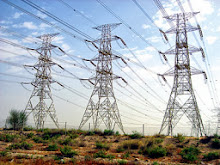Limit Switches
Limit
Switches
The switch, which is one of the most basic of all
sensors, comes in two types? normally open and normally closed. Prior to
advances in sensor technology, mechanical switches were used extensively in
control applications. Due to improved reliability and performance, mechanical
switches are still used for this purpose, but they are primarily used where
switch actuation and wear are minimal. The standard limit switch is a
mechanical device that uses physical contact to detect the target. A typical
limit switch consists of a switch body and an operating head.
The switch body contains electrical contacts to
energize or de-energize a circuit. The operating head incorporates a lever arm
or plunger. This is also called an actuator. The actuator rotates when the
target applies force. This movement changes the state of contacts within the
switch body. Several types of actuators are available...
The roller type actuator is most suited to applications where a sliding contact causing the rotary part to rotate would otherwise cause contact wear to take place over a period of time.
The roller type actuator is most suited to applications where a sliding contact causing the rotary part to rotate would otherwise cause contact wear to take place over a period of time.
The fork-style actuator must be physically reset after
each operation and is suitable for critical stop applications in movement
control. i.e. where a limit of movement has been exceeded and a manual reset is
required following an emergency stop.
Flexible loop and spring rod actuators can be actuated from all directions, making them suitable for applications where the direction of approach is constantly changing.
Plunger-type actuators are ideal where short, controlled machine movements are present, or where space or mounting does not permit a lever-type actuator. The plunger can be activated in the direction of plunger stroke, or at a right angle to its axis.
Flexible loop and spring rod actuators can be actuated from all directions, making them suitable for applications where the direction of approach is constantly changing.
Plunger-type actuators are ideal where short, controlled machine movements are present, or where space or mounting does not permit a lever-type actuator. The plunger can be activated in the direction of plunger stroke, or at a right angle to its axis.
All switches use the following common
definitions of contact type
Single Pole, Single
Throw (SPST)
A switch that makes or breaks the connection of a single conductor in a single branch circuit. This switch typically has two terminals. It is commonly referred to as a "Single-Pole" Switch.
Single Pole, Double Throw (SPDT)
A switch that makes or breaks the connection of a single conductor with either of two other single conductors. This switch typically has 3 terminals, and is commonly used in pairs and called a "Three-Way" switch.
Double Pole, Single Throw (DPST)
A switch that makes or breaks the connection of two circuit conductors in a single branch circuit. This switch typically has four terminals.
Double Pole, Double Throw (DPDT)
A switch that makes or breaks the connection of two conductors to two separate
circuits. This switch typically has six terminals and is available in both
momentary and maintained contact versions.
The limit switch is used to determine the proximity of
equipment (the Applications section illustrates a few examples). The limit
switch can output only two signals: ON and OFF. It outputs a digital ON signal
when the lever arm is depressed and a digital signal OFF when the lever arm is
not depressed (see Figure 2 below). External forces, such as collisions,
produce a digital ON signal, which remains ON until the lever arm is released.
 |











0 comments:
Post a Comment